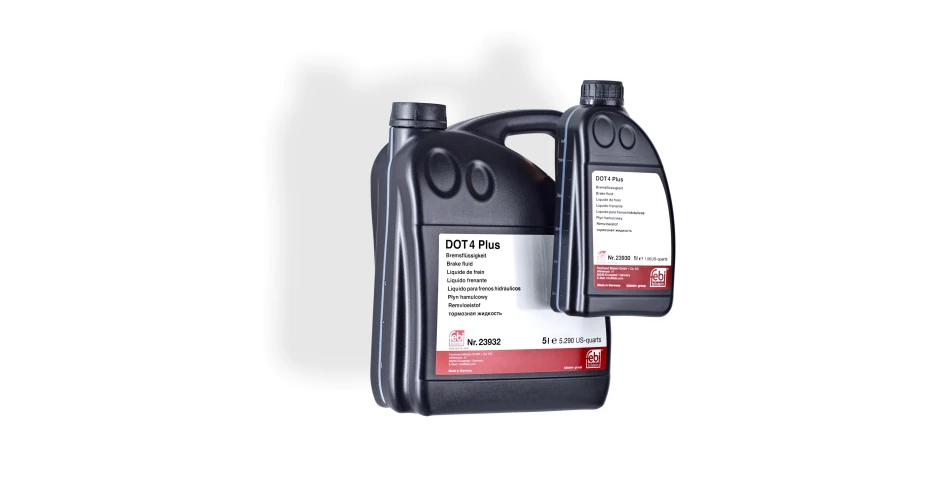As well as supplying a huge range of hard parts, aftermarket specialist febi also has great expertise in the supply of essential automotive fluids, for braking, transmission, lubrication, cooling and more. The brand has especially extensive experience in the field of safety critical brake fluid.
Brake fluid is an important safety-critical component within a vehicle’s braking system. febi DOT 4, DOT 4 LV (low viscosity), DOT 4 Plus, DOT 5.1 and DOT 5.1 EHV (electric and hybrid vehicle) are fully-synthetic brake fluids based on glycols, containing oxidation and corrosion inhibitors with excellent dry and wet boiling point properties which also prevent vapour bubble formation.
Friction during the braking process generates heat with some of this heat is absorbed by the brake fluid. For this reason it needs to be hygroscopic and also requires replacement.
The boiling point of a brake fluid is a temperature at which gas bubbles form. As soon as a gas bubble forms, the pressure in the brake system can no longer be maintained because the gas can be compressed. The consequence is a sudden reduction in braking effectiveness, which can lead to an accident.
The hygroscopic property of brake fluid is required so that any water present distributes itself evenly throughout the liquid. If water is collected in a specific area, the boiling point would lower to approximately 100 °C. However, if the water is dissolved in the brake fluid up to a proportion of 3% (for example), the boiling point would remain significantly higher than 100 °C, where the risk of bubble formation is much lower.
Several factors affect and accelerate the absorption of water. These include the storage of brake fluid in open, unsealed packaging for longer periods, non-compliance with brake fluid service intervals, damaged brake system elements (e.g. cracks or splits in the outer layers of flexible brake hoses), or damaged seals/gaskets.
The hygroscopic properties of the brake fluid stem from the glycol content. This allows the fluid to gradually absorb more and more water, which also means that it needs to be changed on a regular basis. Vehicle manufacturers generally recommend changing the brake fluid every 30,000 to 50,000 kilometres or every two years, subject to operating conditions.
To ensure an effective and fully-functioning braking system while guaranteeing driving safety, febi brake fluids are developed in accordance with the binding quality standards and requirements of vehicle and brake system manufacturers to meet all the requirements for current brake systems, including electronically-controlled brake systems which need to perform reliably and within fractions of a second.
febi brake fluids for all applications meet OE matching quality and are available from factor stockists nationwide.
